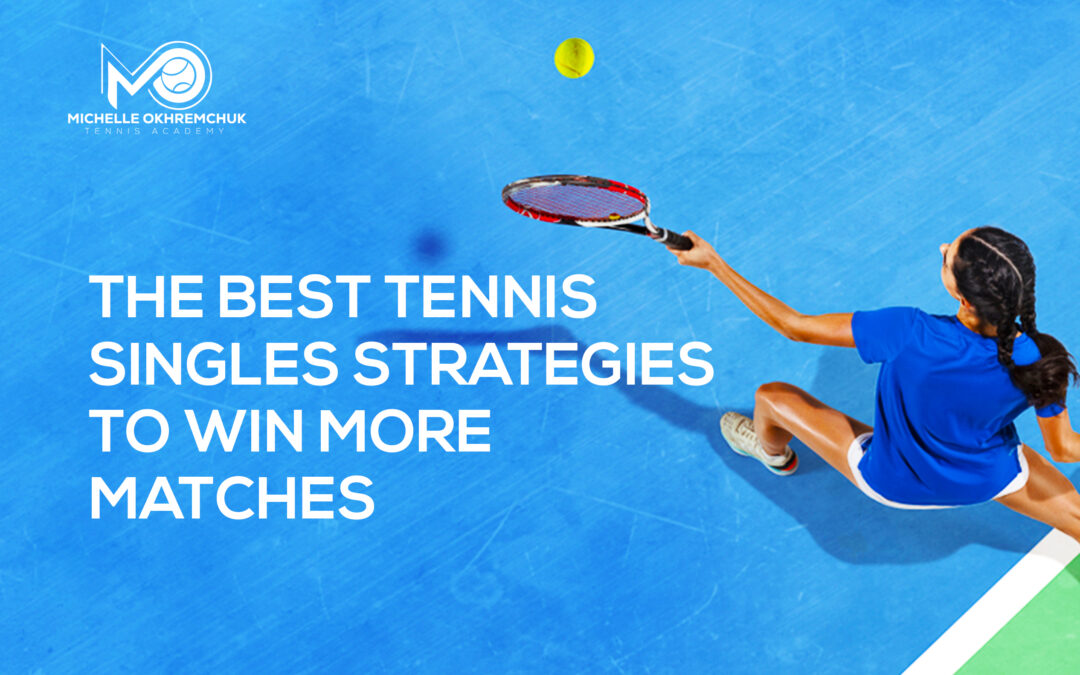Want to elevate your tennis singles strategy and secure more victories on the court?
The margins between success and defeat in tennis can be razor-thin, and your tactical choices can tip the scales in your favor.
Here, we present a comprehensive guide to essential tennis singles strategies that harness the power of your mind to enhance your game and win more matches.
The Significance of Effective Tennis Singles Strategies
In tennis, matches are often decided by the smallest of details. While you may not have the luxury of instantly improving your technique or talent level during a match, you can play smarter by mastering singles tactics.
Have you ever wondered why you occasionally lose to opponents who might not be as skilled as you are? It often comes down to their understanding of what it takes to win and their willingness to implement those tactics.
Many players, upon delving into the study of tennis singles strategies, realize they lacked the essential insights required to turn the tide in their favor on the court. This realization can be a game-changer for you, allowing you to exploit opponents who haven’t honed their tactical skills.
Let’s delve deeper into these strategies.
Your Forehand as Your Key Weapon
While some players insist that their backhand is their strong suit, it’s a rarity for a backhand to outshine the forehand. The dynamics of these shots typically favor the forehand. Even players who believe they have a superior backhand often find that the forehand possesses greater capabilities.
For most players, involving the forehand as an attacking tool is a significant advantage. The extra spin and power potential of the forehand allow you to take control of points and apply relentless pressure on your opponent.
If your forehand is your primary attacking weapon, as is the case for most players, actively seek opportunities to position the ball on your forehand side.
Targeting Your Opponent’s Backhand
To reverse the strategy of focusing on your own forehand, consider targeting your opponent’s backhand. A highly effective tactic in singles is pitting your forehand against your opponent’s backhand.
This approach can yield exceptional results, as exemplified by left-handed players who frequently exploit their opponent’s backhand with cross-court forehands. However, this tactic is not exclusive to lefties; anyone can employ it successfully by being agile and using footwork to maneuver around the ball.
By pinning your opponent on their backhand side, you limit their options, as many players struggle to escape from this predicament.
While some opponents may possess a strong backhand, this strategy still pays off against the majority who find themselves trapped on the backhand side.
Three Ways to Win a Point
At its core, tennis comes down to a simple fact: if you place one more ball in the court than your opponent, you win the point. This can be achieved in three ways:
- Hitting a winner
- Forcing an error from your opponent
- Capitalizing on your opponent’s unforced error
While winners and unforced errors are commonly scrutinized statistics, it’s crucial to recognize the value of forcing your opponent into making errors. Instead of fixating on hitting winners or waiting for your opponent to falter, devote more attention to tactics that compel your opponent to make mistakes.
Some effective methods include moving them side to side, robbing them of time through strategic positioning, varying your shot pace, using spin to generate uncomfortable shots, and pushing them deep behind the baseline. Each opponent is unique, requiring different approaches to induce mistakes. Thus, attentive observation of your opponent’s tendencies is vital.
The Power of the Serve
The serve holds a pivotal role in tennis for three key reasons:
- You have full control over the shot.
- You have two chances to execute it (first and second serves).
- It sets the tone for the ensuing point.
Capitalizing on your serves requires meticulous planning. Each serve should have a specific target (often, the backhand proves to be the most fruitful), and you should envision your next shot after the serve, known as the “serve plus one.” This combination offers an opportunity to set up an attacking forehand, placing you in control of the point.
Your first serve percentage is critical, as it offers an advantageous starting point. While powerful first serves are appealing, consistently placing a high percentage of first serves in play provides you with a favorable beginning to rallies. Don’t hesitate to dial back the power to ensure accuracy.
Embrace Risk and Adapt
It’s essential not to fear losing points in tennis. Even in a lopsided 6-2, 6-2 victory, you lose numerous points. Consequently, there’s no reason to shy away from ambitious strategies or shots that offer the best chance of winning a point.
Tennis offers a continuous pathway back into the match until the very last point. Disregard the score and focus on implementing strategies that maximize your chances of success.
Embrace Change
If a tactic you’re employing proves ineffective, it’s time to adapt. Comfort zones are not conducive to success if they align with your opponent’s strengths.
Don’t hesitate to experiment with different strategies, even briefly, to shift the momentum of the match. Whether it’s introducing serve-volley tactics or other unorthodox approaches, be open to change when the situation demands it.
Master Baseline Play
In tennis, the baseline is where most battles are waged. Players who favor power and groundstrokes dominate the sport. To compete effectively, you must develop the skills required for baseline mastery.
While unconventional styles can disrupt opponents, aggressive baseline play has become the norm among top-ranked players. Embracing power play and shot consistency is essential for success.
Proper Preparation is Key
Professional players invest substantial time in off-court preparation. They consult physiotherapists, psychologists, physical trainers, and data analysts to refine their game.
Scrutinizing your own game will reveal where your strengths are and, just as importantly, where your weaknesses are.
If you have a killer backhand slice why focus on trying to hit topspin rockets from your weaker wing? And if you know the game of your opponent, then so much the better, you can develop a game plan that focuses upon their weaknesses and avoids their strengths.
Conclusion
When you enter the match court, your practice time is over, and you cannot make last-minute technical adjustments. Your arsenal consists of your forehand, your serve, and your backhand, but your mentality and tennis singles strategy are within your control. By employing these tennis strategies, you can enhance your game and enjoy more victories.


